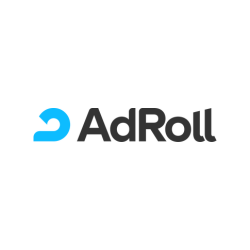At A Glance
As CTV viewership grows, marketers face challenges in targeting and measurement across fragmented platforms. Identity resolution and audience strategies, supported by Experian’s syndicated audiences and privacy-safe solutions, help DSPs and advertisers reach high-value audiences, improve campaign accuracy, and drive measurable outcomes.In our Ask the Expert Series, we interview leaders from our partner organizations who are helping lead their brands to new heights in AdTech. Today’s interview is with George Castrissiades, General Manager of Connected TV at AdRoll.
Premium reach and fragmentation
As viewer attention fragments across platforms, how should marketers redefine “premium reach” in CTV to prioritize engagement and audience quality over scale alone?

A few years ago, ad supported streaming over-indexed on younger adults, those without much financial history and much more budget conscious. It would have been fair for B2B brands to assume that maybe they weren’t going to find their C-Suite audiences on those channels, and so connected TV(CTV) was positioned as a top of funnel tactic aimed at retail. But that’s all changed – ad-free prices are going up, and ad supported tiers are the norm across the majority of channels. 66% of adults have at least one ad supported streaming channel, and adults today spend nearly as much time streaming movies and TV as they spend on their mobile phones. Now that ad viewing audiences on CTV really span the full spectrum of demo, techno, and firmographic segments, savvy marketers should partner with platforms that offer breadth and depth of targeting and measurement to find the highest value audiences wherever they’re watching CTV and serve them highly relevant ads that draw their attention towards the screen. I know I’m jumping out of my seat whenever I see an AdTech or MarTech ad.
Identity and relevance
What does a strong identity framework unlock for delivering household- and person-level relevance across screens, and how does it reshape audience planning?

In privacy-safe ecosystems, people want to share less data and log in to websites and browsers less frequently. If you can’t resolve a household ID to a CTV device through Safari and other sources of obfuscated identity, you’re going to end up losing a lot of signal along the way. On top of that, targeting smaller, higher-value audiences means this attrition can have a profound impact on your ability to build meaningful reach and use audience forecasts to predict scale. A strong identity framework is the key to maintaining as much of your planned audience as possible and staying true to initial forecasts.
AI and outcome planning
How is AI evolving CTV from tactical bidding to strategic outcome planning, and what mechanisms are in place to validate true performance lift?

Tomorrow isn’t guaranteed, especially not in advertising. Audiences change where and when they consume media, and so shifting budget to a placement that did well yesterday is like buying a stock when it’s outperforming – the gains might be gone by then! Predictive AI is bridging the gap to find the highest value and most engaged audiences in real time, versus being purely reactive. This helps drive outcomes which we see in the form of pipeline influence, ROAS, and site traffic lift – without exponentially increasing costs. The same is true for account-based marketing(ABM) outcomes – there’s a blend of signals, account “fit” and intent data that needs to be evaluated in a deeper, more intelligent way. AI is helping to find those highest value accounts, even before they’re in market, which means smart marketers aren’t showing up late to the party.
Measurement and incrementality
What privacy-safe, closed-loop measurement frameworks should become standard to prove incremental visits and sales from CTV campaigns?

Working with a dedicated multichannel, full-funnel ad and marketing platform like AdRoll can easily let you know when a user arrives at your site and makes a purchase, but understanding how that customer arrived there and which tactics deserve the credit requires a deeper, more sophisticated workflow. Our partnership with Experian allows all devices in a household to ladder back up to a household ID, so we can ensure accuracy without pivoting on anything personally identifiable. This works perfectly in CTV, an environment that follows an app workflow of user resettable device IDs rather than IP address or email but always connects seamlessly to web tokens including cookies. Accuracy, scale, and privacy are maintained in a proven way – you see this tech underpinning the infrastructure of streaming across all the biggest players, so marketers can rest easy.
Creative and commerce
How can creative sequencing and shoppable TV experiences convert living-room attention into commerce without compromising user experience or feeling intrusive?

I like to say that CTV trades attention for action. Users lean back and focus on the messaging and visuals of the big screen rather than scrambling for the mouse or tapping to close some intrusive pop-up. This focus means that the messaging is absorbed more quickly, but creatives can wear out their welcome just as fast. Sequential messaging really helps to move the messaging along without subjecting the viewer to longer ads where attention wanes, but also increases brand recall and specific product information because the story evolves with each impression. This is a great tactic to use when you want a viewer to take a specific action later – but shoppable ads can help motivate a user to act now, and new formats can really simplify things. Shoppable can feel out of range for most – the top players in this space own major e-comm storefronts and then tie them back into their own demand-side platforms (DSPs), content, and streaming devices. For the rest of us, dipping our toes in slowly through simple and cheap solutions like QR codes can connect audiences right to a web experience from their TVs, or intermediate solutions like interactive video ads. Users love to play around with fun on-screen experiences, and there’s a whole spectrum of crawl/walk/run options available.
Trust and governance
Which shared guardrails—brand safety, fraud control, and frequency management- are essential to unlocking sustainable, scaled investment in CTV?

I’ve always thought of CTV inventory analogously to high-end watches – if you buy from the source or a well-known, reputable dealer, you’re probably buying the real thing. But that fancy timepiece the guy was selling outside the bar, that you swore looked real? Probably not. Untrusted resellers and too-good-to-be-true pricing might mean you’re running ads on a screen at a lonely gas station at 3 am to an audience of no one, and that’s not even the worst case scenario. Good relationships and deep pockets can solve brand safety and fraud issues, but not every advertiser is going to have those resources. Brand safety and fraud prevention can reduce workload and help distinguish the good stuff from the growing pool of gray area, arguably, CTV inventory that isn’t what was promised to a customer. Outsourcing this trust also goes a long way, with buyers knowing you’re not grading your own homework. Frequency management is equally as important. Once you have your audience and your good supply, it’s important not to abuse a single household just because they meet your targeting criteria. Reach is your best friend with CTV.
Data and audience strategy
How do Experian’s syndicated audiences provide a consistent, scalable foundation for planning, activation, and measurement across CTV and digital, and what outcomes are clients seeing?

We love to talk about how Experian’s data is such an integral part of so much of streaming’s architecture, and the fact that it’s built on deterministic datasets means you’re getting scaled audiences built on knowledge rather than best guesses. That means a lot when working across multiple channels, privacy-safe environments, and households with an ever-growing number of connected devices. Our customers are always delighted at how precise targeting can be, especially in the B2B/B2C space – and knowing the size of those audiences helps them to understand how budget transforms into reach in a more predictable way. It’s confidence-inspiring to point to a new audience and tell your client that these are their future customers. The best part is showing them the outcomes reporting – we consistently see a massive spike in site traffic and engagement on days when a new Experian syndicated audience is launched!
Contact us
FAQs
Identity resolution ensures marketers can connect devices and maintain audience accuracy. Experian’s identity solutions help reduce data loss and improve audience forecasts, making campaigns more effective.
With viewer attention spread across platforms, marketers need tools that offer both broad and detailed targeting. Experian’s syndicated audiences provide reliable, scalable data to help identify and reach high-value audiences across channels.
Techniques like sequential messaging and shoppable ads keep viewers engaged and encourage action. Simple tools like QR codes or interactive video ads can connect audiences to web experiences directly from their TVs.
Strong identity frameworks help DSPs maintain accurate targeting and audience reach, even in privacy-focused environments. By connecting devices to household IDs, solutions like Experian’s Digital Graph ensure DSPs can deliver relevant ads and measure performance effectively across channels.
About our expert

George Castrissiades
General Manager of Connected TV, AdRoll
George leads the CTV go-to-market strategy at NextRoll, driving rapid growth and adoption of the channel for both B2B and B2C customers. With a track record of building and scaling CTV solutions, he is focused on developing a strategic playbook that accelerates success in the evolving digital advertising landscape.
Before joining NextRoll, George spearheaded CTV product innovation at iSpot.tv and held leadership roles in product and operations at YouTube, VICE Media, Crackle, Roku, and Innovid. His expertise spans product development, monetization, and market expansion.

About AdRoll
AdRoll is a connected advertising platform built for growth-minded marketers. With powerful AI, flexible campaign tools, and seamless integrations, AdRoll helps mid-sized businesses turn complexity into clarity and clicks into customers. The AdRoll platform delivers full-funnel performance through multi-channel advertising, audience insights, and cross-channel attribution, supporting marketers across industries including ecommerce, technology, financial services, education, and more. For B2B teams, AdRoll ABM extends these capabilities with account-based precision, multi-touch campaigns, and real-time buyer intelligence. Backed by nearly 20 years of data and award-winning support, AdRoll enables marketing teams to advertise smarter, move faster, and achieve more, all from one place.
Latest posts

As I walked onto the buzzing streets of Cannes for the first time, my senses were immediately captivated by the energy that filled the air. I'd heard plenty about Cannes Lions, the globally revered International Festival of Creativity, but being in the midst of it all was an entirely different ballgame. 1. A visual extravaganza From the moment I woke up from my two-hour nap, (Seattle was a long way to travel to Cannes), I was awestruck by the grandeur of the festival. Usually known for its tranquil beauty, the city was alive and brimming with imagination. Massive installations, eye-catching billboards, and immersive media experiences were scattered over the two-kilometer stretch of La Croisette, transforming the city into a canvas of creativity. I saw firsthand how abstract concepts could be turned into palpable realities, especially those of Spotify, Yahoo!, and Stagwell's Sport Beach with their basketball court with stadium seating setup. 2. Nuggets of wisdom shared in panels The festival's days were jam-packed with thought leadership panels – each a masterclass in the ever-evolving universe of AdTech. Fortunately, as a member of the Experian team, I didn't have to travel far for unique panels; we hosted four panels throughout the week, and I was immersed in dynamic discussions about new trends, groundbreaking ideas, and the challenges ahead. One recurring theme that resonated with me was the intricacies of authentically connecting with consumers. Finding genuine human connections amidst digital chaos can be challenging in today's tech-driven world. These dialogues provided incredible insights into how we could maintain the delicate balance between personalization and privacy and effectively use artificial intelligence (AI) to enhance customer engagement without compromising the human essence in advertising. Watch our panels 3. Connect with your peers If Cannes Lions is known for anything apart from its creative inspiration, it's the unparalleled networking opportunities. The festival allowed me to interact with professionals from all corners of the world. Each exchange was not merely about exchanging contact details but building meaningful relationships. Will these first arcs lead to meaningful friendships? I sure hope so. 4. A comprehensive learning opportunity The most crucial aspect of the festival was the immense opportunity it offered for learning. I found myself constantly absorbing new information and insights from the panels, every conversation, and every chance meeting. 5. Juggle your time Effective time management was crucial for maximizing my Cannes experience, with many things happening concurrently. I would give myself a B- for this. During the day, when I had some downtime, I could have ventured to another panel, attended a networking event, or taken in a view of the city I didn't get. That's the biggest challenge, and the beauty of Cannes Lions is its unique blend of professional learning opportunities set against the backdrop of a picturesque seaside town, but how do you do it all? 6. Relish the experience My week at Cannes was filled with intense learning, insightful conversations, and eye-opening experiences, leaving me mentally drained and intellectually stimulated (I think those can happen concurrently). The festival left me with a renewed appreciation of why we do what we do in the AdTech industry: supporting the pursuit of creativity, the drive for innovation, and the desire to forge meaningful connections. Cannes Lions was more than just a festival – it was a week of stepping out of my comfort zone, gaining deep insights, and establishing relationships that I hope will last a lifetime. As I boarded my flight out of Nice, surrounded by adults with layers of event access bracelets, I was inspired and stacked with knowledge and ideas that will help drive meaningful marketing opportunities with our content and partnerships. The grandeur, the learning sessions, the networking, and the profound lessons exceeded all my expectations. My week at Cannes Lions was unique, intense, insightful, and unforgettable. It was an experience I can't wait to repeat! Follow us on LinkedIn or sign up for our email newsletter for more informative content on the latest industry insights and data-driven marketing. Get in touch Latest posts

It’s been one week since the highly anticipated Cannes Lions 2023 – the event of the year for advertising and creativity. We're thrilled to share our top four key takeaways from the event, showcasing what the industry will prioritize in the upcoming year. Signal loss At Cannes Lions 2023, experts underlined the detrimental effects of signal loss on advertising and emphasized the significance of having diverse channels. Discussions emphasized the importance of adapting paid media strategies to align with evolving consumer behaviors in order to remain relevant in the ever-changing landscape. Urgency in planning and avoiding being caught without a solid strategy was a common theme throughout the event. Alternative identifiers, like first-party data, were highlighted, as they prioritize privacy-centric approaches. Contextual advertising emerged as a key part of the solution, providing relevant ads that fit seamlessly into the user's experience. Collaboration Collaboration was a major theme at Cannes Lions 2023. Attendees explored topics such as maintaining privacy and identifying the right attributes for effective targeting. Clean rooms were discussed as a way to ensure privacy when sharing data, and highlighted partnerships as the key to unlocking interoperability within the advertising ecosystem. The discussions underscored the need for industry players to join forces and collaborate on solutions that benefit all stakeholders in the ecosystem. “What makes Cannes unique is that you have a lot of decision makers in the room at the same time. This leads to more efficiency in terms of coming up with goals and objectives and really getting to the heart of the key aspects for us to build partnerships.”alison omealia, vp, customer success, experian Personalization Personalization was a key topic of discussion at Cannes Lions 2023, with its growing significance in advertising taking center stage. The event emphasized the need to focus on serving up tailored content that resonates with individual consumers, cultivating brand affinity. The intersection of science and art was highlighted, emphasizing the role of data-driven insights and creativity in supporting frequency capping and delivering engaging content. Advertisers are adapting to cookie deprecation by shifting from cookie-based third-party targeting to first-party data solutions. This is due to the significant changes in the consumer privacy landscape, which have limited advertisers' access to signals emitted by consumers through their devices and browsers. As a result, alternative IDs like UID2, Ramp ID, and ID5 are emerging as viable options for advertisers to continue personalized targeting. Balancing AI and creativity at Cannes Lions 2023 Participants shared invaluable insights on how to strike the right balance between harnessing AI's capabilities and nurturing creativity to keep the human touch alive. The event emphasized the importance of understanding the boundaries of AI while utilizing tools that drive innovation and imagination. Attendees explored the dynamic roles that AI provides and discussed how it can help push the boundaries of their creativity while still keeping the human element intact. As technology continues to advance, so does the need for advertisers to adapt their approach and integrate AI in a way that enhances their creative output. Experian events at Cannes Lions 2023 We hosted a series of events that included a kick-off event and four panels. The activities were designed to provide attendees with valuable insights on various topics related to advertising and data privacy. Here's a recap of what we covered during the week. Experian’s Cannes Lions kick-off event We co-hosted a kick-off event on Sunday with Audigent. It was a successful event that brought people together to launch an important week in the AdTech industry and build connections with clients and prospects alike. Data on the sell-side Ongoing signal loss has marketers, agencies, and platforms tapping directly into the sell-side for high-quality audience and context. In this panel, industry experts from Truthset, Captify, Audigent, Newsweek, and PubMatic joined Experian to discuss the imminent disappearance of cookies and the need to adapt and future-proof data privacy strategies. The deprecation of third-party cookies presents an incredible opportunity to redefine data privacy practices and empower consumers. Our panelists emphasized the need to adapt and invest in alternative identifiers in order to thrive in a cookie-less future. Publishers were urged to create valuable content, engage in first-party activities, and consider the next generation of consumers who are growing up without traditional identifiers. The fragmented landscape calls for a variety of tactics and partnerships, while AI can provide opportunities to explore beyond deterministic identifiers, fostering creativity and innovation in advertising practices. Stacking the marketer's toolbox for success In partnership with Adweek Abroad in Cannes, industry leaders from FreeWheel, Tubi, and Instacart joined Experian to discuss opportunities for brands to unlock deeper, richer, and more scalable insights into current and potential customers. The panelists highlighted several key considerations, including building a robust first-party data strategy, ensuring accuracy in data quality partnerships, and establishing better-connected communications and relationships with consumers. Participants acknowledged the value of consumer data and urged advertisers to remain purpose-driven, always putting the viewer first. The freshness and recency of data were identified as critical factors for establishing quality connections with consumers and staying attuned to consumer trends. What does the future of identity hold? During this panel discussion, industry leaders from the IAB, MiQ, Cint, Direct Digital Holdings, and Tatari joined Experian to explore the future of identity. The panelists discussed the challenges cookie deprecation poses in programmatic advertising and the need for new identifiers and solutions. They also acknowledged the expanding media landscape and the importance of frequency capping and attribution measurement in a post-cookie era. Trends to watch for include the potential consolidation of identifiers and the movement of first-party data in-house by larger media companies. Panelists shared different views on cookie deprecation readiness and the overhype of AI in the industry. Streaming takes center stage OMG, Roku, AMC Networks, Paramount, and Disney joined Experian to discuss streaming TV as a fragmented and evolving landscape. The panelists debated whether it has become a performance channel and emphasized the need for client education, attribution, and optimizing performance metrics. They also discussed reaching audiences across different mediums with data interoperability, audience targeting, and reliable identity solutions. The panelists explored the emerging trend of AI, optimizing ad placement, refining targeting, streamlining creative approval, and enhancing ad breaks. “A lot of trends in AdTech are relevant to TV, but the most consistent trend has definitely been having a solid identity source throughout the whole lifecycle of a campaign within TV.”ali mack, sr. director, platforms, experian Watch our panels Let’s keep the conversation going The innovation and possibilities for signal loss, collaboration, personalization, and balancing AI and creativity are limitless, but understanding exactly how to get there is what can make all the difference. As we wrap up another successful week at Cannes Lions, let's use these conversations as an opportunity to advance together toward a more connected future — what trends are you most looking forward to? If you’d like to discuss any of these topics further, get in touch with us! Check out more Cannes content: Insights from a first-time attendee Four new marketing strategies for 2023 Exploring the opportunities in streaming TV advertising The future of identity in cookieless advertising Maximize ad targeting with supply-side advertising Follow us on LinkedIn or sign up for our email newsletter for more informative content on the latest industry insights and data-driven marketing. Get in touch Latest posts

Based on the Q1 U.S. Travel Association Consumer Quarterly Tracker conducted by Ipsos, 52% of American adults are eagerly planning to embark on leisure travel within the next six months. With the pandemic limiting travel opportunities for so long, people are more willing than ever to prioritize travel and make up for lost time. With the summer vacation season upon us, it's crucial to identify consumers who are eager to travel and implement a targeted travel advertising strategy. To help you stand out in the competitive marketplace, we’ll share five audiences you should consider when building out your summer travel advertising activation plan. What separates Experian's syndicated audiences Experian’s 2,400+ syndicated audiences are available directly on over 30 leading television, social, programmatic advertising platforms, and directly within Audigent for activation within private marketplaces (PMPs). Reach consumers based on who they are, where they live, and their household makeup. Experian ranked #1 in accuracy by Truthset for key demographic attributes. Access to unique audiences through Experian’s Partner Audiences available on Experian’s data marketplace, within Audigent for activation in PMPs and directly on platforms like DirectTV, Dish, Magnite, OpenAP, and The Trade Desk. Five travel advertising audience categories With so many travel audiences out there, it can be overwhelming to figure out which ones to target. That's why we've compiled a list of the top five audience categories you should focus on: Seasonal spenders Frequent travelers Travel transportation methods Luxury travelers Vacation type Let's break down each category so you can better understand the travel behaviors and preferences of each group. Seasonal spenders These travelers are known for their willingness to spend during peak travel seasons. They're willing to spend more for travel experiences and have a high propensity to travel. Let's take a look at a few audience segments included in this category that you can activate as part of your summer travel advertising strategy. Retail Shoppers: Purchase Based > Travel > Vacation/Leisure Travelers: Summer Trips: Consumers in this segment are frequent, high spenders of summer travel. Mobile Location Models > Visits > Summer Break Travelers: Consumers in this segment are likely to travel during summer break. Retail Shoppers: Purchase Based With Experian's Retail Shoppers: Purchase Based audiences, you can reach consumers who have a high propensity to buy in specific categories like toys, furniture, apparel, and more. This audience is created by combining known credit and debit transactions with advanced modeling to ensure the highest likelihood of future purchases. You can use these audiences to find travelers interested in the outdoors that spend their money on related gear and activities, or travelers who use rental cars throughout their trip. Mobile Location Models Our Mobile Location Models are based on a statistical analysis of mobile location data from devices. The model is built from individual, household, and area-level Experian Marketing Data. You can use these audiences to find travelers that like to visit theme parks, travel during the July 4th holiday, and travel during summer break. Frequent travelers Consumers in this audience category prioritize travel as a lifestyle choice and they're always looking for their next adventure. They're willing to spend money to make their travel dreams come true and often participate in loyalty programs to earn rewards. Here are just a few examples of the audience segments you can activate to target frequent travelers as part of your travel advertising strategy: Lifestyle and Interests (Affinity) > Travel > Frequent Flyer Program Member: Consumers in this segment are likely to be members of frequent flyer programs. Retail Shoppers > Purchase Based > Travel > Hotels > Frequent Spend: Consumers in this segment frequently spend at hotels like Holiday Inn, Hyatt, Marriott, and Wyndham. Lifestyle and Interests Experian’s Lifestyle and Interests audience segments make it easy to identify and target consumers based on their lifestyle characteristics. These audiences cover a wide array of lifestyle categories, such as: Activities/Interests Purchasing Behavior Contributors/Memberships Lifestyle/General You can use these audiences to find travelers that enjoy boating, like to visit zoos, and are fishing enthusiasts. Travel transportation methods This audience category consists of the transportation methods travelers use to reach their destination or use throughout their travel experience. Here are just a few examples of the audience segments you can activate to target travelers based on their preferred mode of transportation as part of your travel advertising strategy: Autos, Cars, and Trucks > Vehicle Lifestyle Ownership > Recreational Vehicle (RV) Travelers: Consumers in this segment are likely to currently own an RV and use it for travel. Lifestyle and Interests (Affinity) > Travelers > Air Travel (FLA / Fair Lending Friendly): Consumers in this segment are interested in traveling by plane based on their internet activity in the last 90 days. Luxury travelers These high-end travelers seek exclusive, high-end experiences, from top-tier dining to luxurious accommodations. Here are just a few examples of the audience segments you can activate to target luxury travelers as part of your travel advertising strategy: Consumer Financial Insights > Discretionary Spend – Travel > $10,000+: Consumers in this segment are likely to spend more than $10,000 for travel. Retail Shoppers: Purchase Based > Travel > Hotels: Luxury: Consumers in this segment are frequent, high spenders at high-end hotels like Renaissance Hotels, Westin, and Hilton Hotels. Vacation type Unlike the previous categories, our vacation type category focuses on the type of trip a traveler is planning and the destination they're heading to. Whether it's a beach getaway or an adventure-filled trip, segments within this category can help you target consumers looking for those particular experiences. Here are just a few examples of the audience segments you can activate to target travelers by vacation type as part of your travel advertising strategy: Retail Shoppers: Purchase Based > Travel > National Park Travelers: Consumers in this segment are likely to travel to national parks. Travel Intent > Activities > Winery Distillery Brewery Tours: Consumers in this segment are likely to visit wineries, distilleries, and breweries while traveling. Family size and structure In addition to our five recommended summer travel advertising audience categories, it's important to add audiences related to family size and structure to your targeting strategy for the summer travel season. Families with children, for example, are a significant market for summer travel, as parents are looking to create memories with their kids before they go back to school. Families with children have distinct needs and preferences when it comes to travel. For instance, they may need larger accommodation options, kid-friendly activities, and safe environments. On the other hand, married couples with no children or single travelers may have different preferences for their travel experiences. These groups may be looking for more adventurous or adult-oriented experiences, such as camping, hiking in national parks, or winery tours. By segmenting your audience based on family size and structure, you can provide more relevant and personalized recommendations to your target audience, leading to higher engagement and conversion rates. Here are just a few examples of the audience segments you can activate to target travelers based on their family size and structure as part of your travel advertising strategy: Demographics > Marital Status > Single: Consumers in this segment are likely to be single. Lifestyle and Interests (Affinity) > Moms, Parents, Families > Married Mothers: Consumers in this segment are likely to be married females with at least one child under the age of 18 years old. Demographics > Presence of Children > Ages: 0-18: Consumers in this segment are likely to have children between the ages 0 to 18 years old in a household. Demographics > Presence of Children > Ages: 7-9: Consumers in this segment are likely to have children between the ages 7 to 9 years old in a household. We can help you reach summer travelers From seasonal spenders to luxury travelers, there are a host of audiences you should keep in mind as you build out your summer travel advertising strategy. Experian audiences can help you tap into the potential of your summer campaigns by enabling you to identify, reach, and engage with a variety of travelers in their preferred channels. Need a custom audience? Reach out to our audience team and we can help you build and activate an Experian audience on the platform of your choice. Additionally, work with Experian’s network of data providers to build audiences and send to an Audigent PMP for activation. Contact us Latest posts